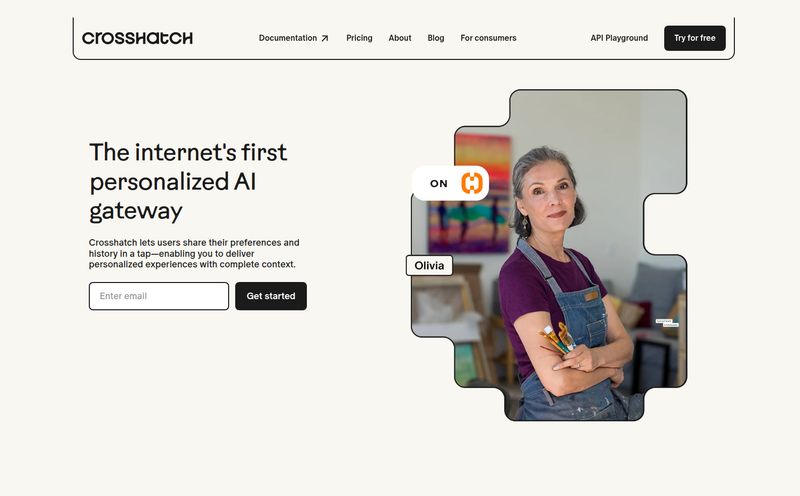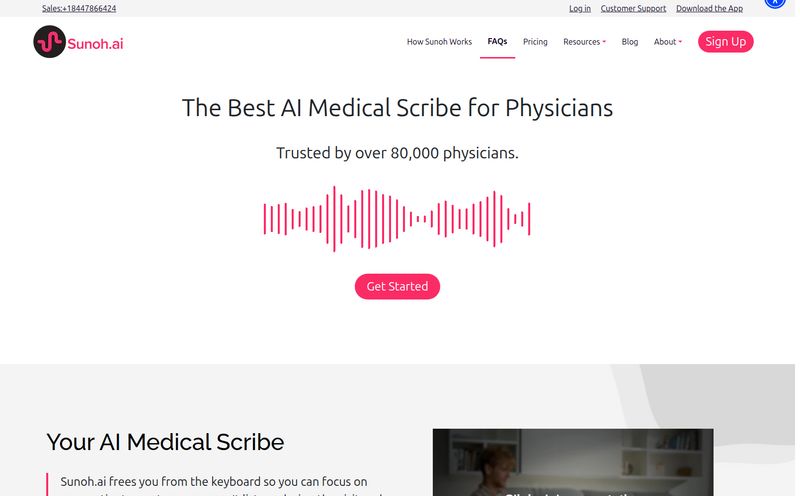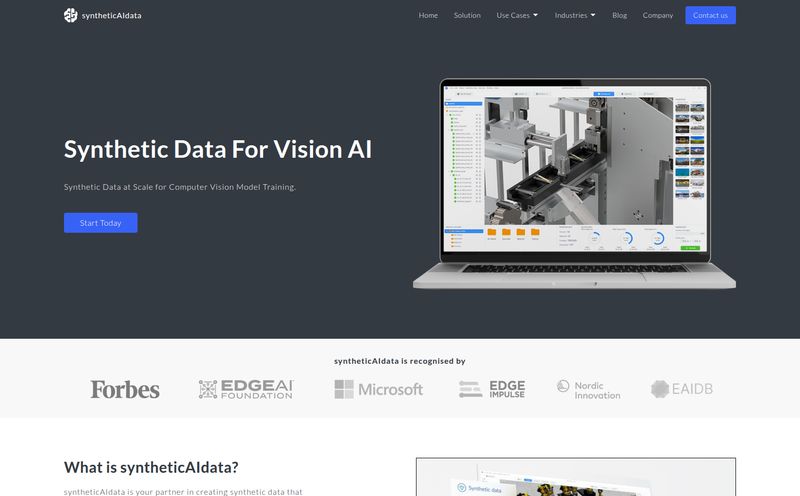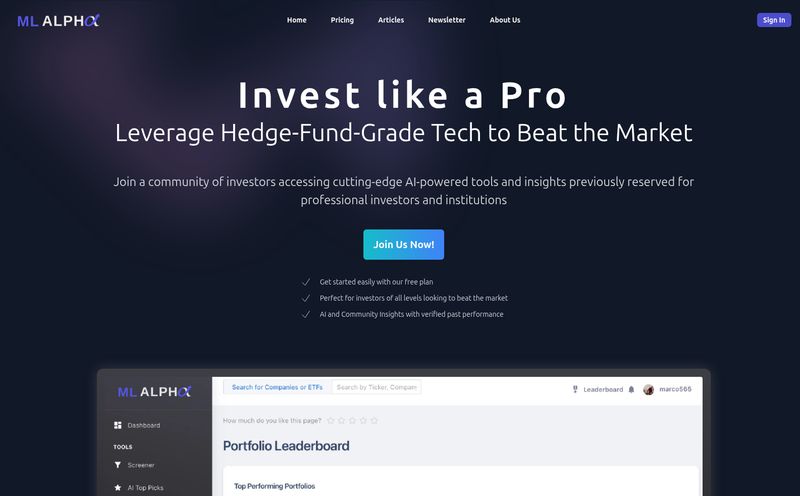We've all been there. You're in your car, maybe the kids are yelling in the back, the radio's on, and you're trying to ask your navigation system to find the nearest coffee shop. You say, “Hey, Car... find coffee.” And it responds with something utterly useless, like “Shuffling songs by The Carpenters.” You sigh, you get frustrated, and you end up just typing it into your phone at the next red light. Defeats the whole purpose of 'hands-free', doesn't it?
The promise of voice user interface (VUI) has always been this sleek, futuristic dream, but the reality is often a clumsy, frustrating mess. Most of the time, the problem isn't the AI's ability to understand words; it's its inability to hear them in the first place. The real world is noisy.
I stumble across new tech promising to revolutionize this space all the time. Most of it is just marketing fluff wrapped around the same old cloud-based algorithms. But recently, a company called Kardome caught my eye. They aren't building another Alexa clone. Instead, they're building the ears. And I gotta say, their approach is pretty clever.
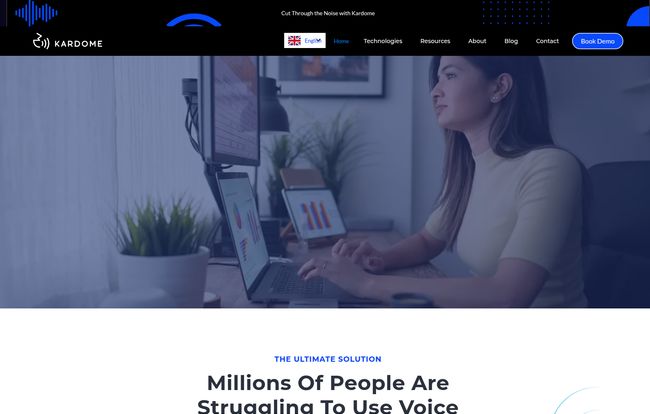
Visit Kardome
So What Is Kardome, Really?
At first glance, their website is full of the usual tech-speak: “AI-powered,” “deep learning,” “all-in-one solution.” But when you dig a bit, you find the core idea, and it’s a good one. Kardome's tech focuses on spatial hearing. It's designed to not just filter out noise, but to identify where a voice is coming from in a 3D space and lock onto it.
Think of it like this: Your current smart speaker is like a single microphone in the middle of a loud party, trying to pick out one conversation. It’s a jumbled mess. Kardome is more like a professional sound engineer with a directional boom mic who can pinpoint the exact person talking and tune everything else out. It clusters speech signals based on location, giving you a clean audio stream to work with. This is an ‘Audio Front End’ solution, meaning it’s the first thing that processes the sound, before it gets sent to the main brain for interpretation. A much smarter way to do things, in my opinion.
This isn't a consumer app you can download. It’s a B2B play for Original Equipment Manufacturers (OEMs)—the folks building the cars, the smart fridges, the conference call systems. Kardome gives them the tools to make their existing voice recognition systems actually work in the chaotic environments we live in.
The Features That Made Me Sit Up and Pay Attention
Okay, let's get into the weeds. What's actually in the box? I’ve seen a lot of feature lists in my day, but a few of Kardome's stand out because they address very specific, very real pain points.
Finally, A Solution to the 'Cocktail Party Problem'
The 'cocktail party problem' is a classic challenge in audio processing: how can a human brain focus on a single speaker in a room full of conversations? Well, Kardome is trying to teach machines to do the same thing. Their Spatial Hearing tech and multi-speaker isolation capabilities are the main event. In a car, it could mean distinguishing the driver’s command from the passenger's conversation or the GPS instructions. In a conference room, it could mean clearly capturing each individual speaker for a perfect transcript, even if they talk over each other. This is a big step up from just generic noise-cancelling, which often throws the baby out with the bathwater and clips the actual voice command too.
Your Brand Gets Its Own “Hey Siri” Moment
This one's a big deal for branding and something I've been talking about for years. With Kardome Wake and customized wake words, a car company like Ford or Toyota wouldn't have to rely on “Hey Google.” They could create their own branded activation phrase. Imagine getting into your new truck and saying, “Hey Bronco, take me to the mountains.” It creates a unique, ownable user experience. It's a small detail that has a massive impact on brand identity and customer loyalty. Plus, their Voice ID feature adds a layer of security and personalization, ensuring the car only listens to authorized drivers.
On-Device Processing That Isn't Just a Buzzword
Here’s another point that gets me excited. Kardome’s neural network runs on the device itself. Why does this matter? Two big reasons: speed and privacy. By processing the audio locally, you dont have to send a big, messy audio file to a server in another country, wait for it to be processed, and then get a response. The action is near-instantaneous. And from a privacy perspective, keeping sensitive voice data on the device is a huge win. In an age of data leaks and privacy concerns, this is a major selling point for any consumer-facing product.
Who's This For, and What's the Catch?
This is clearly aimed at engineers and product managers at major hardware companies—automotive, consumer electronics, enterprise hardware, you name it. If you're building a device that needs to reliably hear people in noisy settings, this is for you.
But it's not a magic wand. Based on the documentation and the nature of the beast, there are a few things to keep in mind. Integrating this kind of technology into an existing product line isn't a weekend project; it requires some serious engineering effort. It's not a simple API call. You also have to consider the hardware. To do spatial audio properly, you need a decent microphone array. You can't just use one cheapo mic and expect miracles. Garbage in, garbage out, as they say.
So yeah, it's a commitment. But for a high-value product where a premium voice experience is a key differentiator, I'd say it's a commitment worth exploring.
The Million-Dollar Question: What Does Kardome Cost?
Ah, the part of the review everyone scrolls to first. And the answer is... it depends. There’s no pricing page on their site, which is completely standard for this kind of B2B/OEM solution. You won't find a “Basic, Pro, Enterprise” chart here.
Pricing for this kind of tech is almost always custom, based on factors like:
- Volume: How many millions of devices will you be shipping?
- Application: Is it for a car or a toaster? The licensing will differ.
- Support: How much hand-holding will your engineering team need?
- Customization: Do you need a unique wake word or other special features?
So, you’ll have to do what the site says: Book a Demo and talk to their sales team. Don’t expect it to be cheap, but expect the value to be there if your product's success hinges on a flawless voice experience.
My Final Take: Is Kardome the Real Deal?
I've been in the SEO and tech game for a while, and my hype-meter is pretty well-calibrated. I’m genuinely optimistic about what Kardome is doing. They aren't just throwing more processing power at an old problem. They're fundamentally changing how the problem is approached by focusing on the physics of sound capture first.
The combination of spatial hearing, on-device processing, and branded wake words is a powerful trifecta. It addresses the biggest user complaints about voice tech—accuracy, latency, and privacy—while also giving brands a powerful new tool. It’s an ambitious play, but it’s grounded in solving a real, tangible issue. It just might be the tech that gets me to stop yelling at my car's dashboard.
Frequently Asked Questions About Kardome
- What exactly is Kardome?
- Kardome provides advanced voice user interface (VUI) technology for hardware manufacturers. Its main selling point is using location-based audio processing (spatial hearing) to isolate a speaker's voice, even in extremely noisy environments, making voice commands far more accurate.
- Is Kardome a replacement for Alexa or Google Assistant?
- No, not directly. It’s better to think of Kardome as a sophisticated 'front-end' that works with those platforms. It cleans up and isolates the audio before sending it to a speech recognition engine like Alexa's or Google's, dramatically improving their performance.
- Who is the target customer for Kardome?
- Their customers are OEMs (Original Equipment Manufacturers). Think car companies, manufacturers of smart home devices, conferencing systems, kiosks, and other voice-enabled hardware.
- Does Kardome's technology work offline?
- A key part of its tech, the audio front-end processing and noise reduction, runs directly on the device. This means the initial, crucial step of cleaning up the audio happens locally and quickly, without needing a cloud connection. The final command interpretation might still rely on the cloud, depending on the OEM's setup.
- How much does Kardome cost?
- There is no public pricing. As an enterprise solution for OEMs, pricing is customized based on the scale of the project, required features, and implementation support. You need to contact their sales team for a quote.
- What makes Kardome different from standard noise cancellation?
- Standard noise cancellation just tries to remove background sound. Kardome's spatial hearing technology is more advanced; it identifies the 3D location of the speaker and focuses specifically on them, allowing it to distinguish between multiple speakers and ignore ambient noise more effectively.
The Last Word
For years, we've been trying to improve voice AI by making the software brain smarter. Kardome's approach reminds us that maybe we needed to give the brain better ears first. It’s a compelling shift in focus, and one that I think will have a big impact on the next generation of smart devices. The truly hands-free future might be closer than we think.
References and Sources
- Kardome Official Website
- The Cocktail Party Effect - Wikipedia
- The Pros and Cons of On-Device AI - Embedded.com
